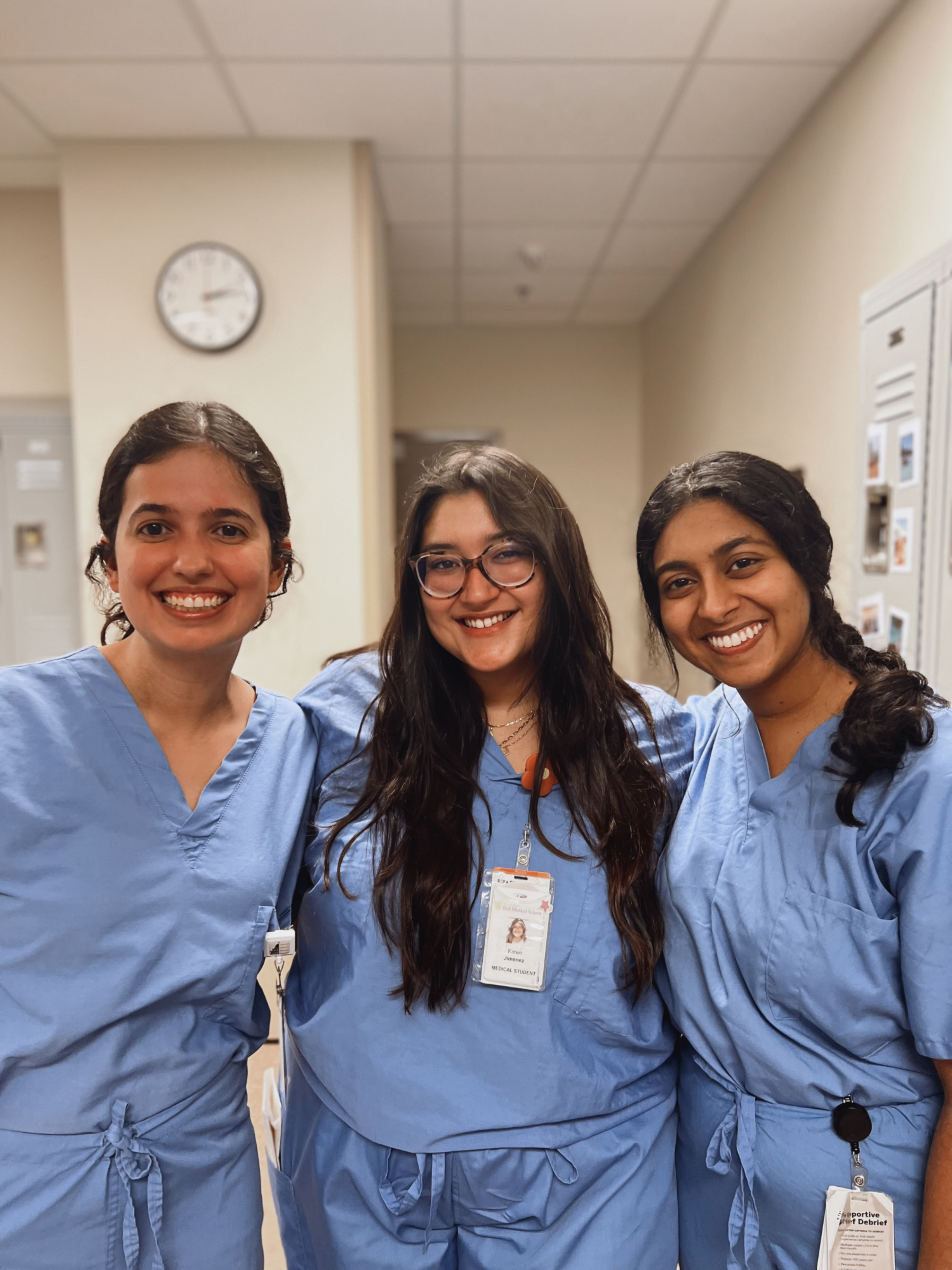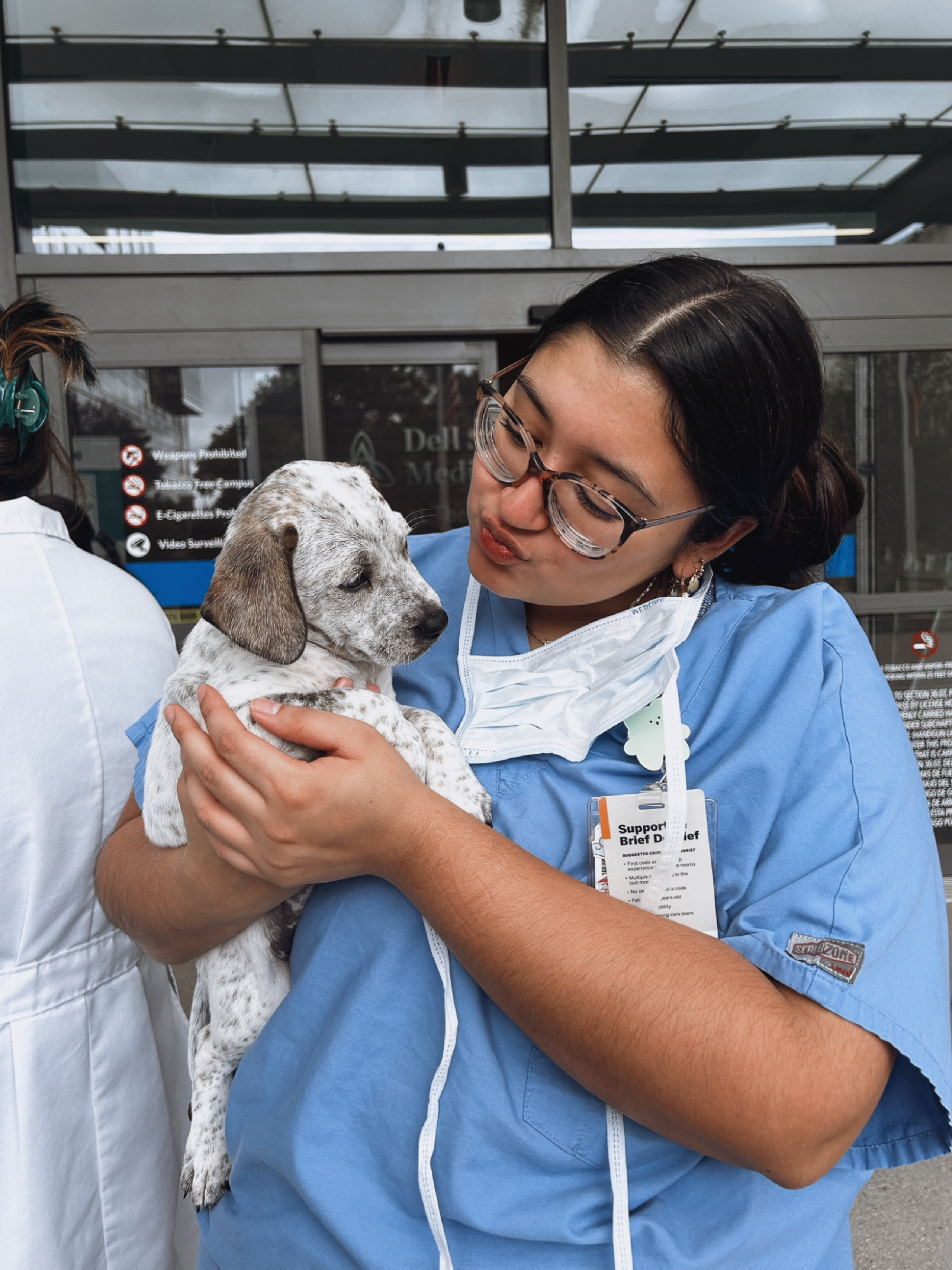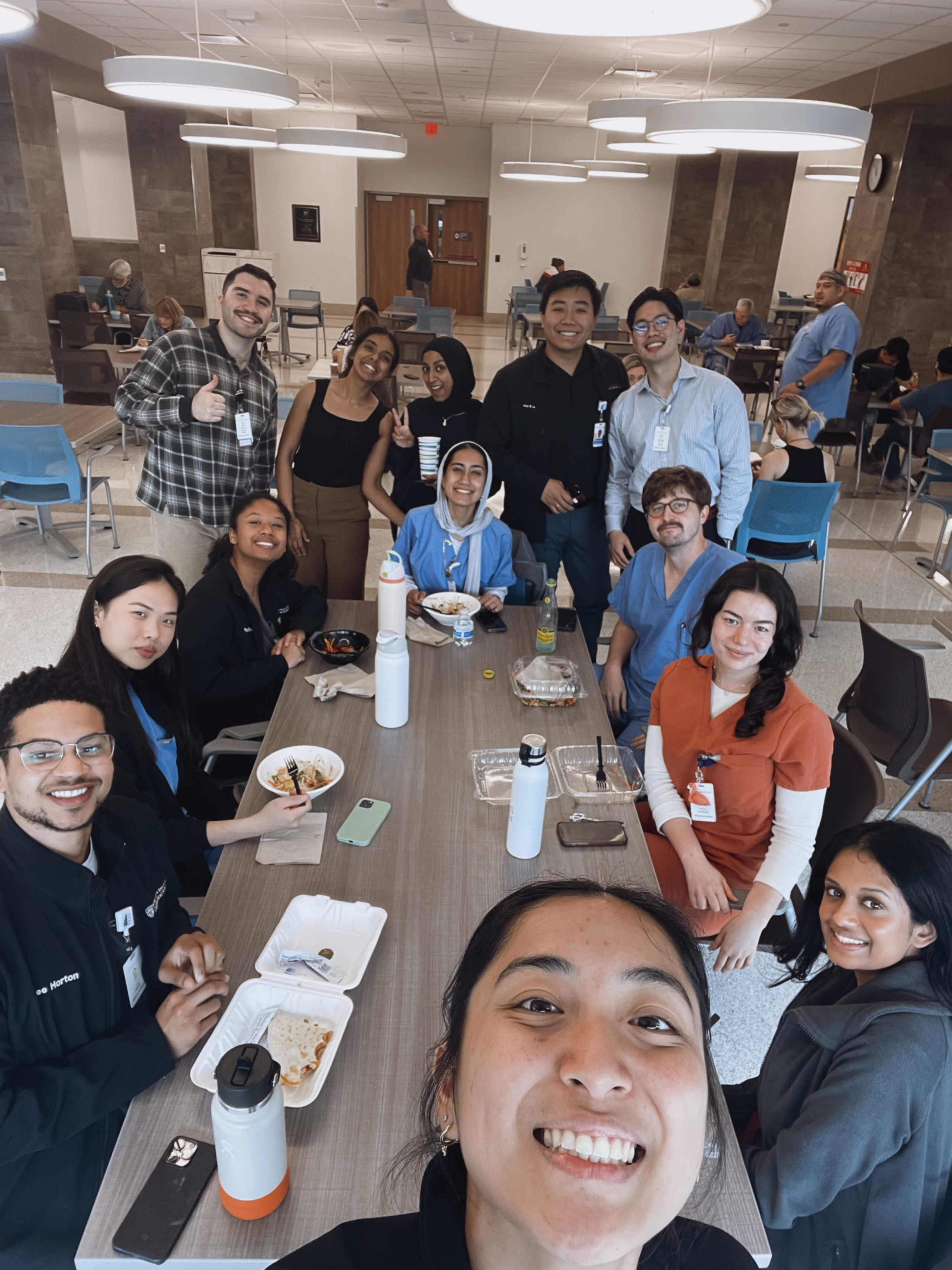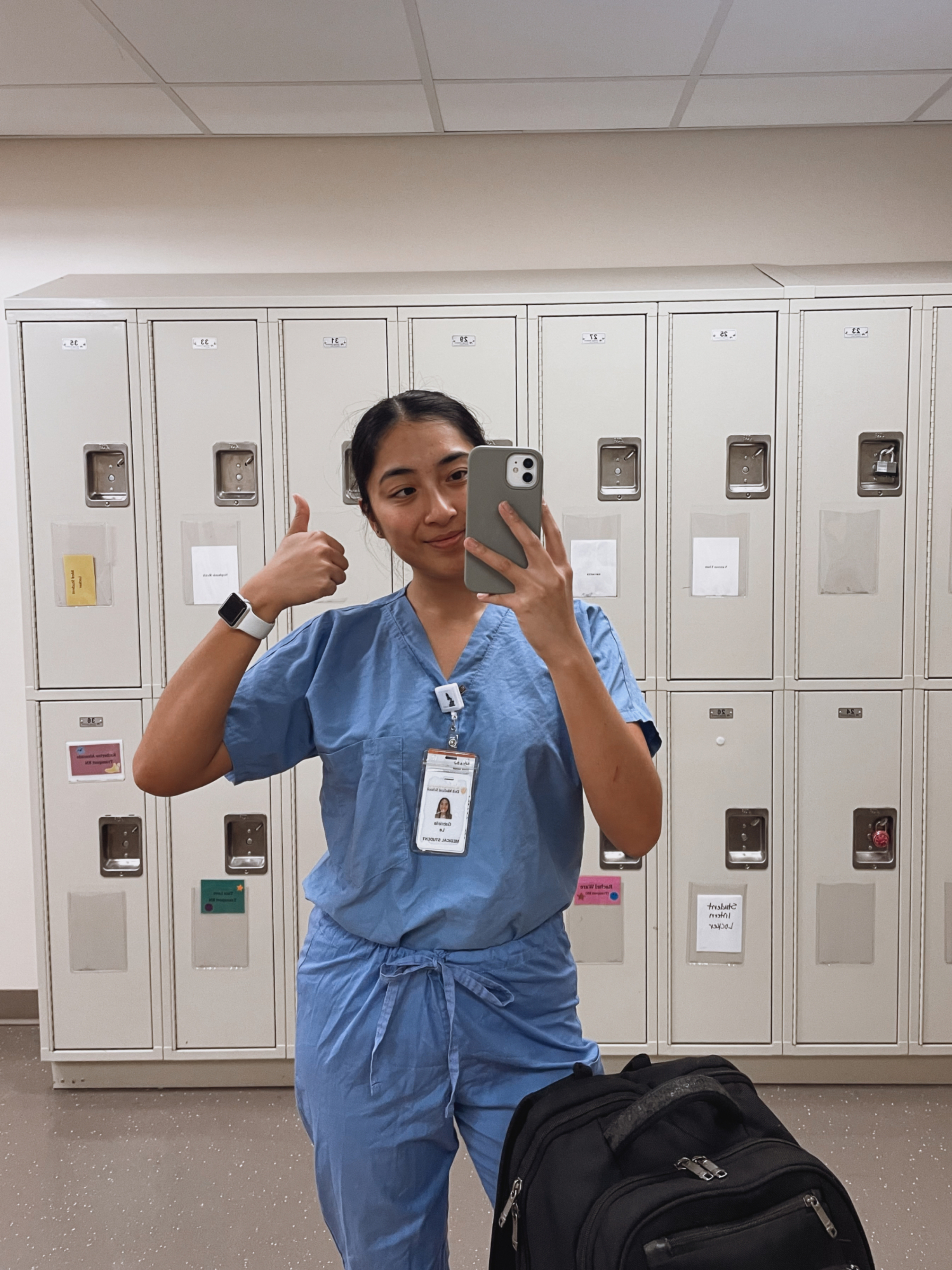As part of Dell Medical School’s Leading EDGE curriculum, preclinical work is accelerated, and students begin clinical rotations in Year 2.
The experience is a pivotal one in students’ careers: With six core clerkships under their belt by Year 3, their remaining time in medical school — from independent inquiry in Dell Med’s Growth Year to taking U.S. Medical Licensing Exams — is informed by firsthand experience with patients and care teams.







“Meaningful time at the patient bedside and in collaboration with a variety of clinical care teams is at the core of medical education,” says Beth Nelson, M.D., interim vice dean of education. “Research suggests that these experiences have a positive impact on Step exam scores — but more importantly, we can see day to day how much the clinical experience can completely alter and shape a student’s trajectory throughout the remainder of their training. It may be a challenge for them to dive right in, but with the right support systems in place, it makes all the difference.”
We spoke with four students who looked back on the highs and lows of their first clinical experiences. Meet them now:
What was your most surprising or challenging rotation? What did you take away from it?
Gabrielle Le:
“Despite it being the most challenging rotation, I finished my women’s health clerkship wanting to pursue OB-GYN as my specialty.
“You’re in labor and delivery for two weeks, then gynecologic surgery, then outpatient clinic, then maternal-fetal medicine — once you start feeling a bit comfortable with a service, you’re whisked away to the next one. This structure emulates the diversity of practice of an OB-GYN physician. With the brief amount of time on each service, I learned that there was no room for hesitancy. From day one, I strived to be adaptable and learn as quickly as I could. By the end of the clerkship, I realized that being able to operate one day, see patients in clinic the next day and then deliver newborns after that is what I want as a future physician. I want to see patients in a variety of settings and hone a wide array of skills.”
Karen Jimenez:
“The most challenging rotation for me was internal medicine, which I completed toward the end of my second year. What I found most difficult was the slow pace of patient recovery and the recurring issue of readmissions. Despite the efforts we made to stabilize patients in the hospital, I often felt uneasy about how well they would manage once discharged.
“While I valued the opportunity to collaborate with social workers on discharge plans and securing resources for patients, it was tough to accept that we couldn’t fully control their outcomes. I learned that as a clinician, you have to trust in the work you’ve done and let go of the uncertainty that follows after discharge. This experience taught me to focus on the small victories and trust in the collective effort of the health care team, even when the long-term outcomes remain uncertain.”
You jump right into clinical rotations after just one year of preclinical work. In what ways did that challenge or help you?
Graham Quinn:
“I felt taking the Step 1 exam in the middle of my clerkship year was really beneficial. The patients I had seen during my first three clerkships had given me more foundation for studying for the exam.
“The clerkship year can be really challenging, but it also gives medical students opportunities to explore specialties and learn from really impressive faculty and residents. The experiences of caring for new patients every day and experiencing the ‘bread and butter’ of as many areas of medicine was the best way for me to feel strongly about which route I want to take for my career.”
Gabrielle Le:
“Doing rotations as a second-year medical student has paved the way for many opportunities for me. As a third-year student now, I already know what specialty I want to pursue and have an entire year to participate in research and extracurricular organizations to prepare for residency applications.
“At this point, I have already taken both my STEP 1 and STEP 2 exams, which has freed my time and mental space to focus on other opportunities. I am currently earning my master’s in educational psychology this year, a decision that was informed by my time during rotations. Clerkships reaffirmed my passion for teaching not only through patient education but also through participating in academic medicine firsthand. In the future, I hope to pursue academic medicine and medical education, and I am grateful to have the third year to explore these options as a future OB-GYN physician.”
Karen Jimenez:
“The opportunity to begin clinical year as soon as the second year heavily impacted my ability to decide what specialty I wanted to dedicate my life to as well as my development of my identity as a future physician. I had some initial ideas about what I was interested in, and getting to dive into my clinical rotations early on allowed me to figure out which I wanted to pursue further and which were not meant for me.
“This then allowed me to further dedicate my third year to exploring more into my desired specialty of obstetrics and gynecology, through research, community service and my Master of Arts in design focused on health. I worked on a project evaluating inequities within the fertility care space specifically for people experiencing social infertility. When conceptualizing our service design solution for this issue, my vital knowledge around patient care helped facilitate conversations about the existing fertility care space to help us create our design.”
How have these early patient experiences informed your future practice?
Graham Quinn:
“One of the unique experiences some medical students are lucky enough to have is to care for the same patients on multiple teams through their clerkship year. On one occasion, I was able to talk with a patient at her first visit in endocrine surgery clinic and then several months later was able to be a part of her urologic surgery to remove kidney stones due to her underlying endocrine disorder. In her initial visit, the patient was initially mistrusting in medical establishments due to her past personal experiences, but having the opportunity to develop a relationship with a patient and later be alongside her as she went to the operating room was really rewarding.
“To me, it highlighted the importance of the relationships that we build with patients and the impact they can have alongside treating their medical conditions.”
Jon Trujillo:
“Rotations humanized diseases, which helped when studying. Instead of regurgitating a list of facts, my memory molded the disease into my patient. Now, knowing that ALS affects the laryngeal muscles is paired with Mr. Smith, who had difficulty swallowing and notably nasal voice. I carry that knowledge with me to all exams and future clinical interactions.
“The most impactful advice from this year was to remember that though we may be explaining the disease for the fifth time today, it may be the patient’s first time hearing about their life-altering diagnosis. So, now I try to offer my patients patience and grace.”